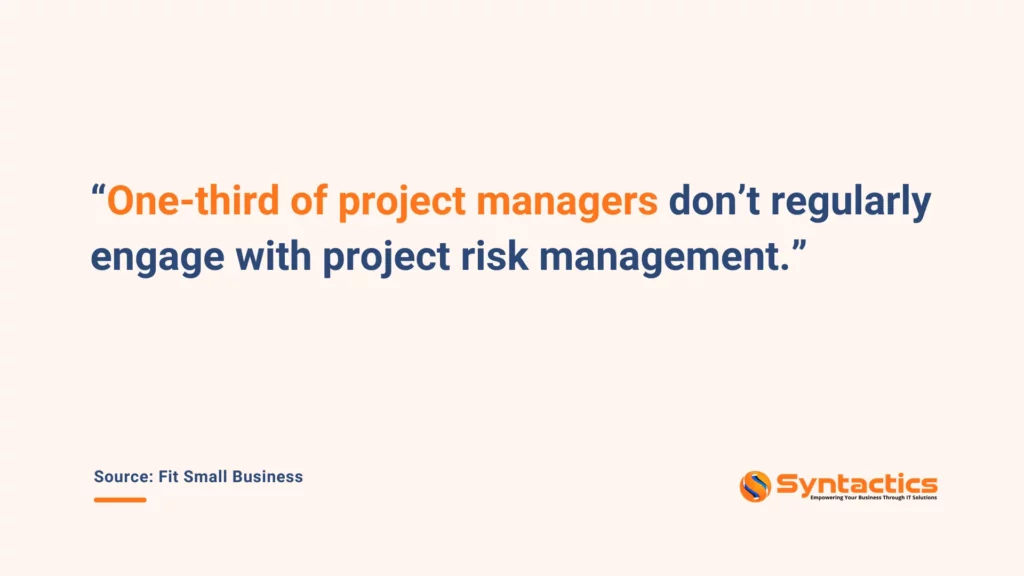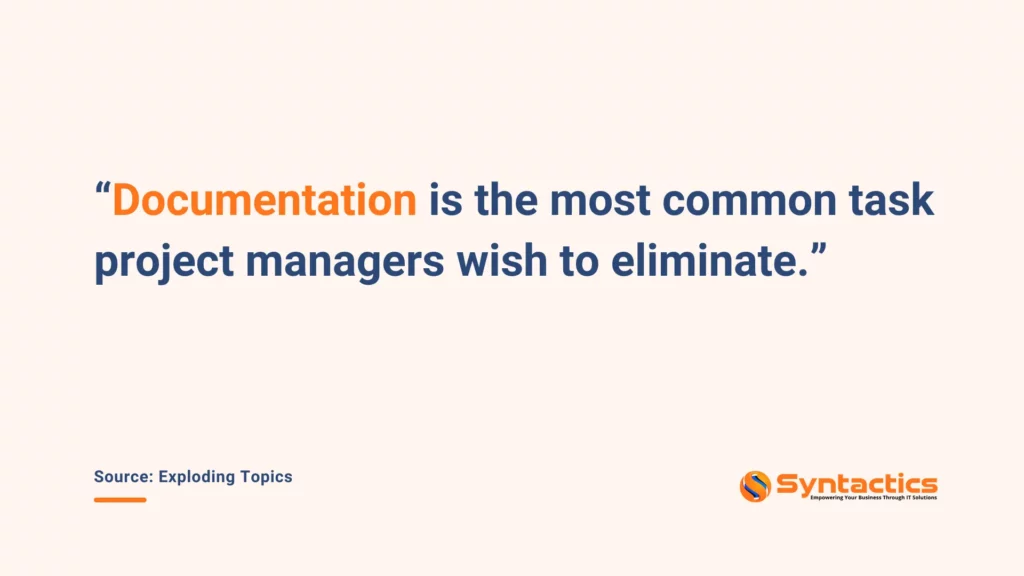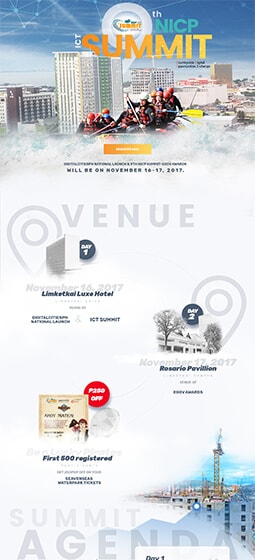
Project Management Reports for Project Managers
The work of a project manager is a delicate balancing act, complying with demands, deadlines, budgets, plans, resources, and customers every day. Project management reports serve as vital tools in navigating these challenges effectively.
With PMs now being one of the most in-demand professionals globally, according to the Project Management Institute, their expertise is increasingly essential to organizational success.
Thus, this growing demand is expected to rise further, with even more new PMs joining the global workforce within the coming years.

Source: PayScale, via Forbes.
On top of managing complex projects to maximize success, experienced PMs create comprehensive reports to ensure stakeholder alignment and track performance. Therefore, PMs can efficiently navigate industry challenges and drive project success.
The Vital Role of Communication in Project Development
Effective communication is critical for every stage of project development. For instance, stakeholders require efficient, informative updates in the form of reports and presentations aligned with the project’s life cycle.
PMs utilize various project management techniques that are guaranteed to bring success. They create many reports that are vital for keeping all parties informed and engaged, resulting in a user-friendly and high-quality end product.
Generally, such documents are designed carefully and sent to select individuals or groups so that communication on the project is precise, reliable, and efficient.
It’s important to look at how PMs prepare reports and what their best practices are to achieve successful outcomes.
Why Project Management Reports Matter
Comprehensive project reports provide clarity and structure throughout a project’s lifecycle. They present key metrics and insights, enabling dedicated development teams to stay aligned with goals and deadlines.
Well-constructed reports allow project management professionals to efficiently allocate resources, monitor budgets, and achieve optimal outcomes.
Through such reports, PMs can track progress and identify risks or issues early. In addition, they enhance communication with project stakeholders, fostering transparency and accountability.
With a practical reporting scheme in place, PMs can provide stakeholders with timely updates. Overall, successful project reporting requires the following:
- Effective communication between all stakeholders on the project and the organization;
- The collection and interpretation of significant data and information to track and record the project’s proceedings;
- An implemented process that guarantees the receipt of feedback and information to the appropriate people whenever necessary, and
- Notifications to all who need to be informed when the project reaches a milestone or hits an obstacle.
Recommended Types of Reports
Here is a quick list of common but crucial types of project reports:
Resource Reports
Overall, reports on resources are the most basic but useful to have as a PM. To ensure project progress, it’s important to know what resources are available and how they can be allocated effectively.
Examples of resources included in this report are workforce availability, tools and equipment, and project budget.
Status Reports
These reports are an effective way to keep a dedicated team and project stakeholders informed and manage expectations.
Many PMs schedule these reports periodically — some even do it daily or weekly.
Furthermore, the reports generally come with updates on the following:
- Completed and upcoming work;
- How long the tasks will take;
- Overall project completion;
- Budget spent on resources, and
- Actionable items and challenges faced.
Project health, timeline, resource allocation, time tracking, and expenses are some examples of status reports that can be useful in any given project.
CPI and SPI Reports
The Cost Performance and Schedule Performance Indexes are useful metrics for assessing project health. In project management, they provide insights into cost efficiency and schedule adherence.
As key components of progress tracking and evaluation, both are typically found under status reports.
The Cost Performance Index measures cost efficiency. It compares the earned value or budgeted cost of work performed to the actual cost. It can be calculated using this equation:
CPI = Earned Value (EV) / Actual Cost (AC)
Projects with a CPI of 1 are on budget, while values >1 or <1 are under and over budget, respectively.
On the other hand, the Schedule Performance Index measures schedule efficiency. It indicates whether the project is ahead, on track, or behind schedule.
Thus, SPI reports compare the cost of work performed to the cost of work planned. Its formula is as follows:
SPI = Earned Value (EV) / Planned Value (PV)
An SPI of 1 indicates that the project is on schedule. However, >1 means that it’s ahead of schedule, and <1 signifies that it’s delayed.
Executive Reports
These are high-level presentations made for CEOs and top management who only need to know what’s relevant and meaningful to them. These reports can focus mainly on issues that executives can help or need to resolve at their level.
For instance, through these updates, they can know whether or not the development team is still on track to hit project key milestones.
Risk Reports
These reports focus on the identification, assessment, and tracking of risks, allowing PMs to mitigate potential threats to project success.
The data presented in this report is the output that comes after a risk review meeting, which includes:
- Risk assessment and actions to be taken to lower risks;
- Return-of-investment computations, and
- Major issues and drawbacks encountered on projects with recommendations.

Source: Fit Small Business.
How Seasoned Project Managers Deliver Effective Reports
Project management experts build reports that are meaningful and informative. Here are the many ways they ensure excellence:
1) Adhering to a reporting guideline and format.
A key part of a project management specialist’s role is sharing data and information, especially with those in higher-level management. They follow predefined standards to ensure that reports are professional and easy to understand.
Experienced PMs keep reports accurate and consistent by using platforms like Google Sheets throughout the project.
2) Conveying facts clearly and directly.
Project management experts use straightforward language and visuals to present data. Their reports are direct to the point, displaying facts and actionable items. As a result, PMs don’t waste precious time.
3) Recapping all actions taken.
PMs provide concise summaries of completed activities and outcomes. To successfully map out progress and the next steps for success, they make sure that the development team’s actions are still on the right track according to project planning and strategies.
4) Keeping reports concise.
To emphasize vital information, PMs will tailor presentations according to the audience they’re presenting to and their needs. This way, they can address concerns promptly.

Source: Exploding Topics.
5) Anticipating issues that may arise.
Project management specialists make it a point to consistently and proactively include potential risks and solutions.
Whenever possible, they reassure stakeholders that they’ve taken into consideration challenges that may have been encountered in a particular stage of project development.
Afterward, PMs record the information along with potential action plans that are realistic and deployable.
6) Proactively analyzing trends in the project.
Performance indicators enable PMs to determine if the project is going in the right direction or not. These experts can monitor project trends to adjust strategies for improved outcomes.
For example, if a team member isn’t delivering tasks on time at consecutive instances, it should be reflected in the report, and a solution must be applied immediately. Otherwise, this will negatively impact the entire project.
Conclusion
Project management reports are indispensable for driving development success. They provide valuable insights that guide decision-making while enhancing communication and alignment among dedicated team members and stakeholders.
Through these reports, PMs can proactively address challenges and optimize resource allocation to greatly improve outcomes.
Contact Professional Project Managers Now!
This blog was updated on December 26, 2025.
Frequently Asked Questions About Project Management Reports
What are the contents of a project report?
The contents of a project report typically include the following:
- Project overview (the goals, objectives, and scope)
- Progress updates, such as task statuses and milestones
- Budget and resource utilization or allocation
- Risk assessment and mitigation strategies
- Key metrics and Key Performance Indicators (KPIs)
- Recommendations, next steps, or required actions
What specific tools or software can be used to create and automate project management reports effectively?
Here are some examples of specific tools or software for creating and automating reports:
- Asana
- Trello
- Monday.com
- Microsoft Project
- Smartsheet
- Wrike
How can project managers ensure data accuracy when generating reports, especially in dynamic projects?
Here are some ways project managers can ensure data accuracy when generating reports:
- Utilize reliable project management tools to centralize critical data.
- Regularly update task statuses and resource usage.
- Conduct data audits and cross-check the information with team inputs.
- Automate data collection and integrate real-time updates from integrated systems.
Which metrics and KPIs should be included in project management reports for better decision-making?
The following metrics and KPIs should be included in reports to enhance decision-making:
- Project progress, or percentage of tasks completed.
- Budget utilization — actual vs. planned expenditures.
- Resource allocation, or the efficiency of resource use.
- Milestone achievements, or progress concerning critical deadlines.
- Risk indicators, the number of identified and mitigated.
- Stakeholder satisfaction, such as by feedback or survey results.


















Comment 0